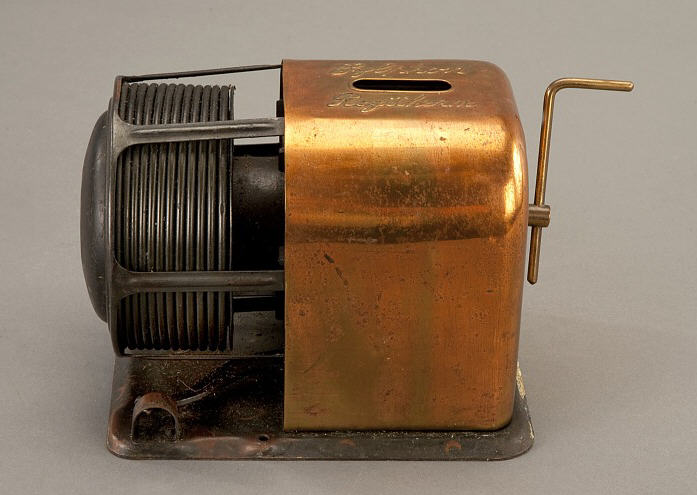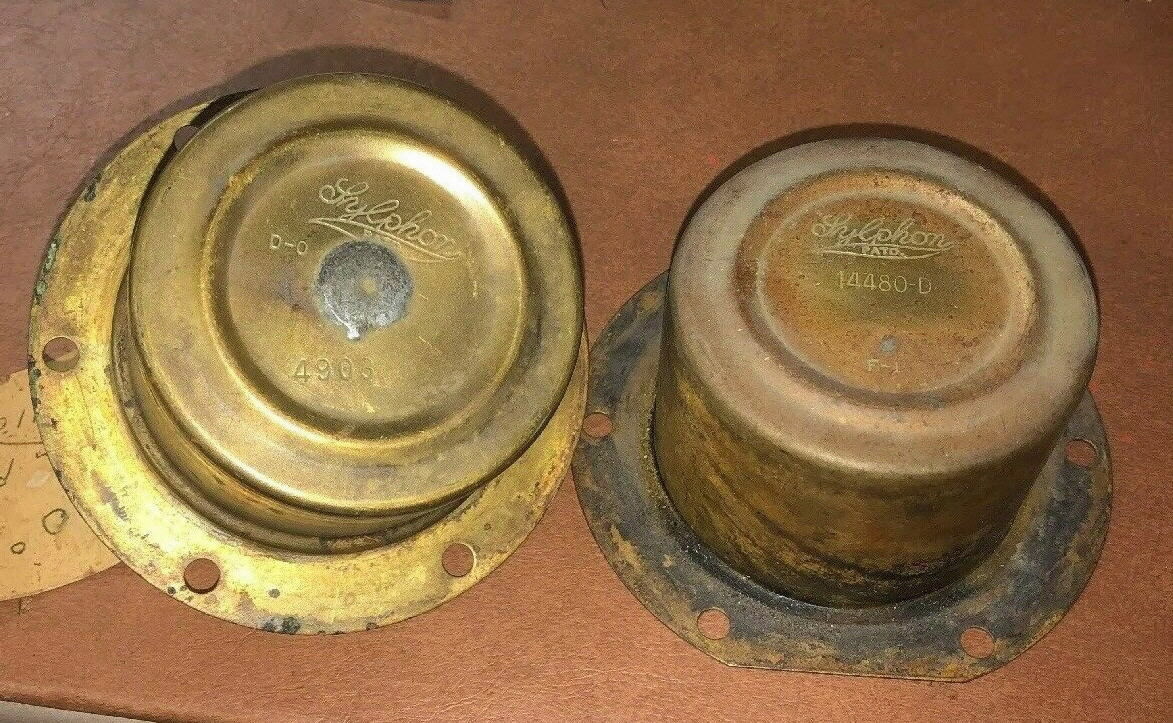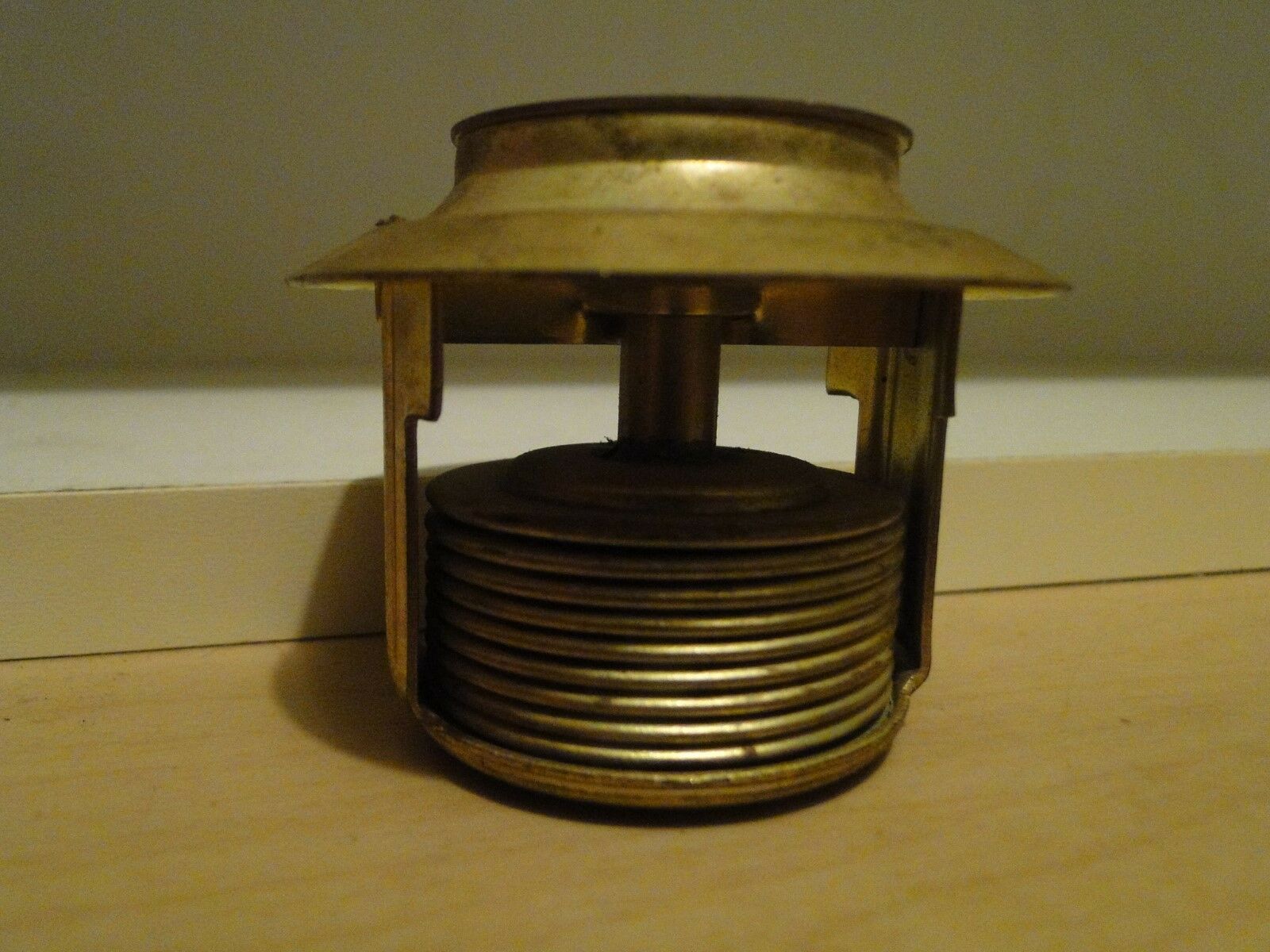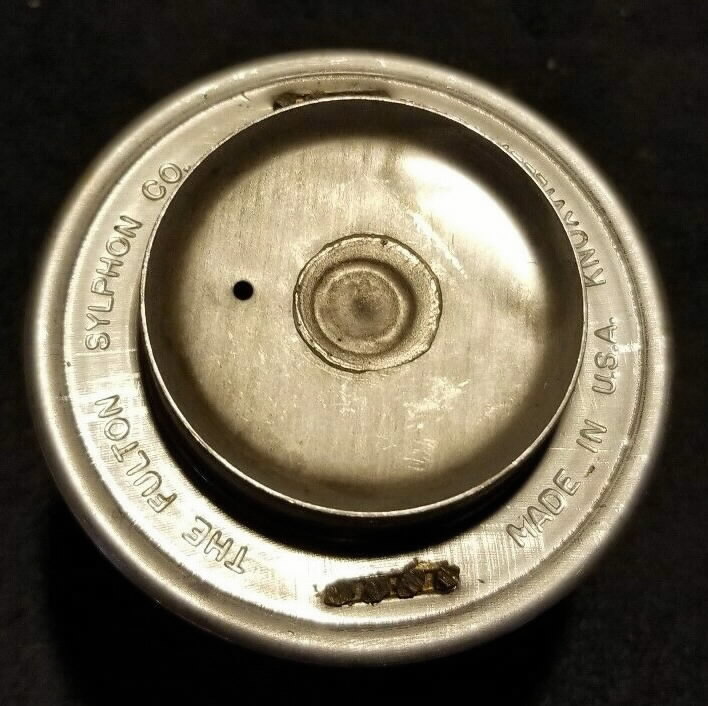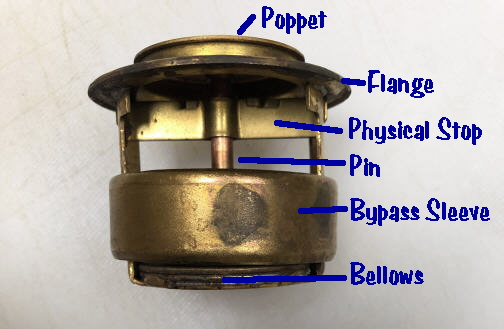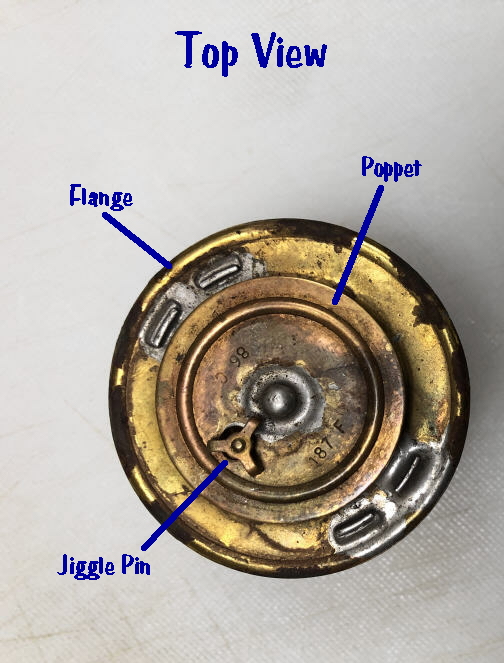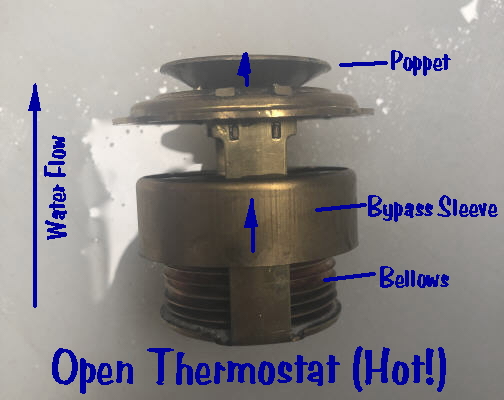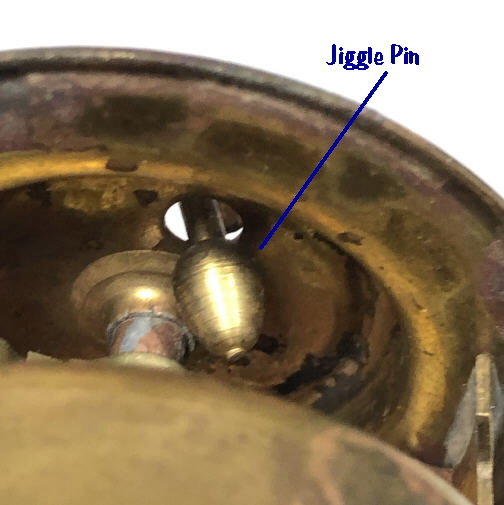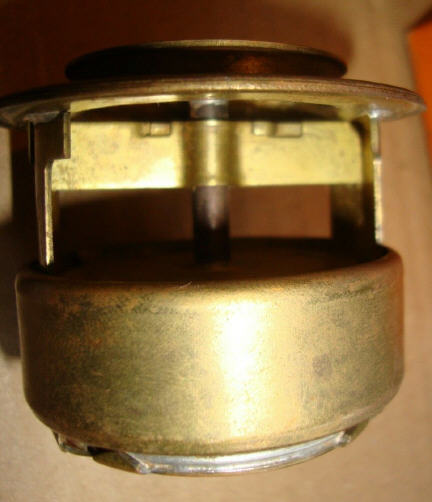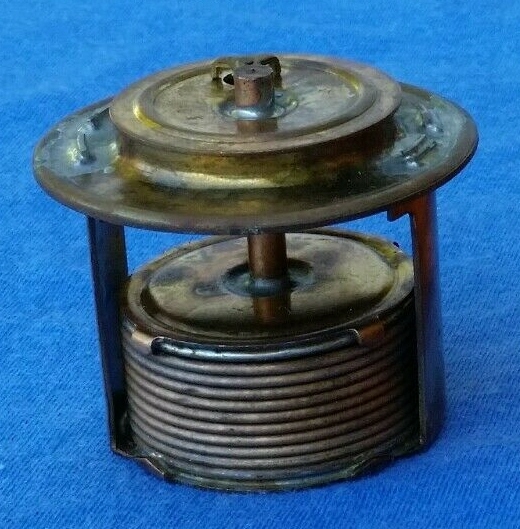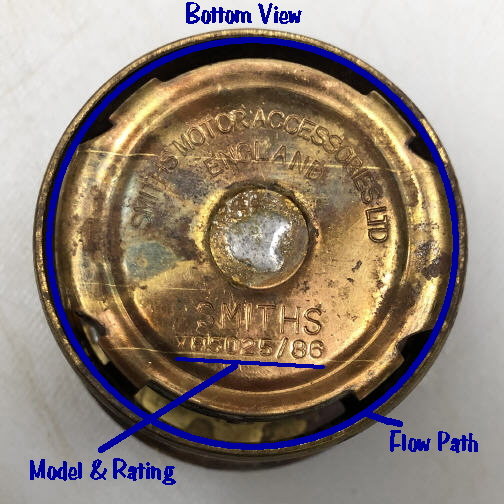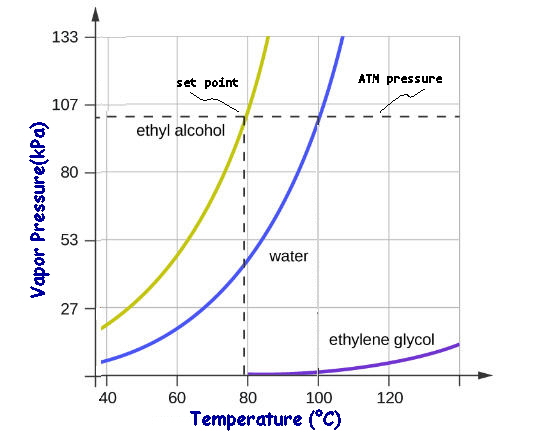The
bellows thermostat was one of the earliest devices for regulating the temperature
of an internal combustion engine. The bellows thermostat was invented by
Weston M Fulton at the beginning of the 20th century, for use in home heating
systems. Fulton called these devices "Sylphons", referring to sylphs, the
air nymphs of Paracelsus's alchemy. (It's true, engineers can be boring
in so many ways.) By the 20's they were used to control radiator shutters
in automobiles and by the 30's, to directly control water flow in engines.
Bellows
thermostats were used throughout the British motor industry into the 1960's.
The primary manufacturer in Britain was Smith's, but they were also made
by Quinton Hazel, AC, Lucas and Remax. Let's take a look at how they're
constructed.
The motor in a bellows thermostat is a sealed berylium copper or bronze bellows which has a liquid charge of alcohol or volatile oil. The set point temperature is determined by the boiling point of the charge. Since the back side of the bellows is permanently fixed to the frame, the pin and sleeve (bypass versions) ride on the face of the bellows. When the fluid vaporizes, the bellows expands, pushing the pin forward, opening the radiator passage and closing the bypass. There is a physical stop which also serves as a guide for the pin. There is no need for a return spring in a bellows thermostat: when the working fluid cools and condenses, a partial vacuum forms and draws the bellows tightly closed. When hot, the bellows itself acts a spring which helps open the thermostat, and this spring effect plays a critical role in regulating the response of the thermostat. It will also cause the thermostat to "fail open" in the even there's a leak. For British
engines with sleeve or slotted bypass systems, there is should be a sleeve
mounted on the bellows. Thermostats without sleeves should not be used
for these applications.
A jiggle
pin or bleed hole allows air to bleed off when the thermostat housing is
initially filled with coolant. This pin should be oriented to the 12 o'clock
position when installing. Once the system is filled and in operation, water
flow will force the jiggle pin to seal, and it will have no further purpose.
(Some thermostats may simply have a tiny hole in the flange or poppet in
place of the jiggle pin. Although the hole would never seal, the resulting
flow of coolant is inconsequential.)
Some fine points about the bellows thermostat. First, it's a forward poppet thermostat: When the poppet opens, it's moving in the same direction as the water flow. This creates a problem, because dynamic pressure tends to force the thermostat open. This is a significant limitation of bellows thermostats, and affects the design of the entire cooling system. Most importantly, it limits the head and flow rate that can be designed into the water pump. A bellows thermostats is best positioned at right angles to the primary direction of flow to reduce the tendency to lift. Boiling Points of Working Fluids
Because the working fluid will have a specific boiling point, these thermostats have low hysteresis, meaning they react VERY quickly to changing temperature. For this reason, they can only be used in applications where the thermostat is placed at the engine's water exit, where the temperature is most stable and almost always above the boiling point of the working fluid. They tend to snap open/closed in response to transients. The most
critical point is that the charge will be in a vapor state when the thermostat
is open. Once the charge is vaporized, the bellows is very compressible
and it will act like an aneroid barometer. Which is to say that it's
very sensitive to pressure. So it should come as no surprise that they
were not really intended for modern pressurized cooling systems.
Care must be taken that system pressures are kept low, otherwise the thermostat
can be literally squeezed out of calibration. For this reason,
the
radiator pressure cap should be rated at no more than 4lbs when
a bellows thermostat is employed. These thermostats were rendered
obsolete by pressurized cooling systems, and were complete anachronisms
by the 1960's.
<Turning Up the Heat Main Wax Thermostats> Copyright©2019 CoolCat Express Corp |
|||||||||||||||||||||||||||||
